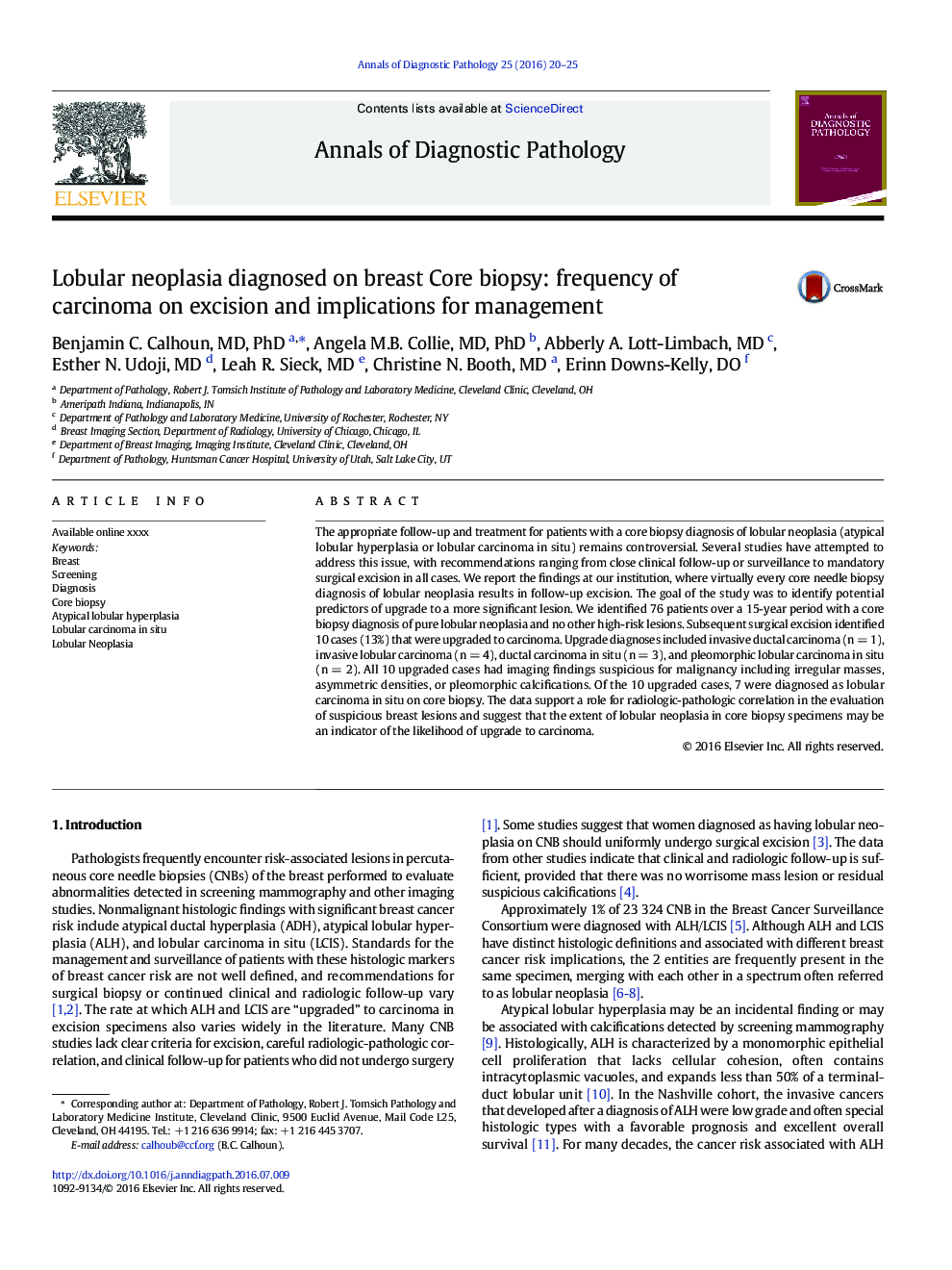| Article ID | Journal | Published Year | Pages | File Type |
|---|---|---|---|---|
| 4129651 | Annals of Diagnostic Pathology | 2016 | 6 Pages |
Abstract
The appropriate follow-up and treatment for patients with a core biopsy diagnosis of lobular neoplasia (atypical lobular hyperplasia or lobular carcinoma in situ) remains controversial. Several studies have attempted to address this issue, with recommendations ranging from close clinical follow-up or surveillance to mandatory surgical excision in all cases. We report the findings at our institution, where virtually every core needle biopsy diagnosis of lobular neoplasia results in follow-up excision. The goal of the study was to identify potential predictors of upgrade to a more significant lesion. We identified 76 patients over a 15-year period with a core biopsy diagnosis of pure lobular neoplasia and no other high-risk lesions. Subsequent surgical excision identified 10 cases (13%) that were upgraded to carcinoma. Upgrade diagnoses included invasive ductal carcinoma (n = 1), invasive lobular carcinoma (n = 4), ductal carcinoma in situ (n = 3), and pleomorphic lobular carcinoma in situ (n = 2). All 10 upgraded cases had imaging findings suspicious for malignancy including irregular masses, asymmetric densities, or pleomorphic calcifications. Of the 10 upgraded cases, 7 were diagnosed as lobular carcinoma in situ on core biopsy. The data support a role for radiologic-pathologic correlation in the evaluation of suspicious breast lesions and suggest that the extent of lobular neoplasia in core biopsy specimens may be an indicator of the likelihood of upgrade to carcinoma.
Keywords
Related Topics
Health Sciences
Medicine and Dentistry
Pathology and Medical Technology
Authors
Benjamin C. MD, PhD, Angela M.B. MD, PhD, Abberly A. MD, Esther N. MD, Leah R. MD, Christine N. MD, Erinn DO,
